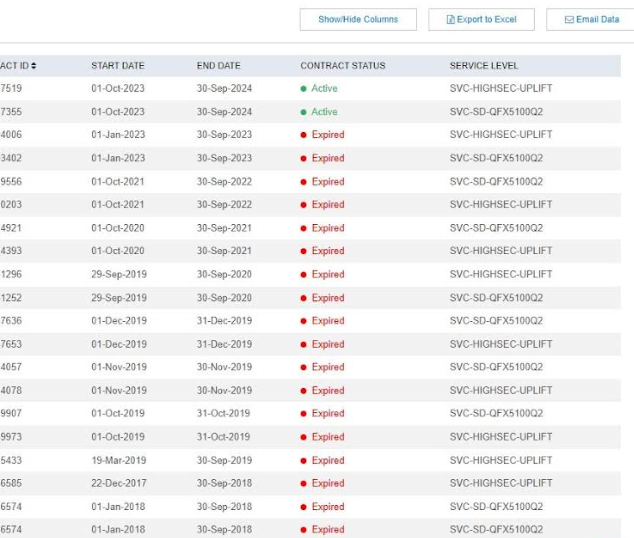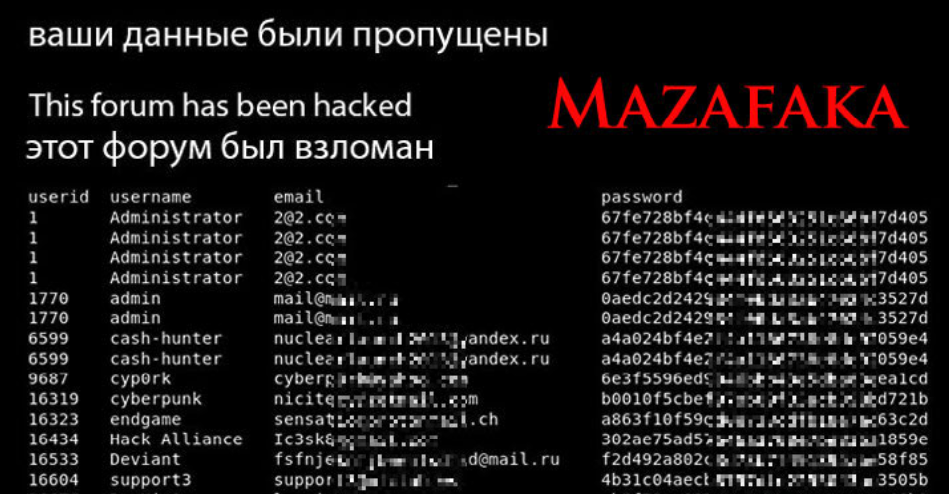Microsoft Corp. today pushed software updates to plug more than 70 security holes in its Windows operating systems and related products, including two zero-day vulnerabilities that are already being exploited in active attacks.

Top of the heap on this Fat Patch Tuesday is CVE-2024-21412, a “security feature bypass” in the way Windows handles Internet Shortcut Files that Microsoft says is being targeted in active exploits. Redmond’s advisory for this bug says an attacker would need to convince or trick a user into opening a malicious shortcut file.
Researchers at Trend Micro have tied the ongoing exploitation of CVE-2024-21412 to an advanced persistent threat group dubbed “Water Hydra,” which they say has being using the vulnerability to execute a malicious Microsoft Installer File (.msi) that in turn unloads a remote access trojan (RAT) onto infected Windows systems.
The other zero-day flaw is CVE-2024-21351, another security feature bypass — this one in the built-in Windows SmartScreen component that tries to screen out potentially malicious files downloaded from the Web. Kevin Breen at Immersive Labs says it’s important to note that this vulnerability alone is not enough for an attacker to compromise a user’s workstation, and instead would likely be used in conjunction with something like a spear phishing attack that delivers a malicious file.
Satnam Narang, senior staff research engineer at Tenable, said this is the fifth vulnerability in Windows SmartScreen patched since 2022 and all five have been exploited in the wild as zero-days. They include CVE-2022-44698 in December 2022, CVE-2023-24880 in March 2023, CVE-2023-32049 in July 2023 and CVE-2023-36025 in November 2023.
Narang called special attention to CVE-2024-21410, an “elevation of privilege” bug in Microsoft Exchange Server that Microsoft says is likely to be exploited by attackers. Attacks on this flaw would lead to the disclosure of NTLM hashes, which could be leveraged as part of an NTLM relay or “pass the hash” attack, which lets an attacker masquerade as a legitimate user without ever having to log in.
“We know that flaws that can disclose sensitive information like NTLM hashes are very valuable to attackers,” Narang said. “A Russian-based threat actor leveraged a similar vulnerability to carry out attacks – CVE-2023-23397 is an Elevation of Privilege vulnerability in Microsoft Outlook patched in March 2023.”
Microsoft notes that prior to its Exchange Server 2019 Cumulative Update 14 (CU14), a security feature called Extended Protection for Authentication (EPA), which provides NTLM credential relay protections, was not enabled by default.
“Going forward, CU14 enables this by default on Exchange servers, which is why it is important to upgrade,” Narang said.
Rapid7’s lead software engineer Adam Barnett highlighted CVE-2024-21413, a critical remote code execution bug in Microsoft Office that could be exploited just by viewing a specially-crafted message in the Outlook Preview pane.
“Microsoft Office typically shields users from a variety of attacks by opening files with Mark of the Web in Protected View, which means Office will render the document without fetching potentially malicious external resources,” Barnett said. “CVE-2024-21413 is a critical RCE vulnerability in Office which allows an attacker to cause a file to open in editing mode as though the user had agreed to trust the file.”
Barnett stressed that administrators responsible for Office 2016 installations who apply patches outside of Microsoft Update should note the advisory lists no fewer than five separate patches which must be installed to achieve remediation of CVE-2024-21413; individual update knowledge base (KB) articles further note that partially-patched Office installations will be blocked from starting until the correct combination of patches has been installed.
It’s a good idea for Windows end-users to stay current with security updates from Microsoft, which can quickly pile up otherwise. That doesn’t mean you have to install them on Patch Tuesday. Indeed, waiting a day or three before updating is a sane response, given that sometimes updates go awry and usually within a few days Microsoft has fixed any issues with its patches. It’s also smart to back up your data and/or image your Windows drive before applying new updates.
For a more detailed breakdown of the individual flaws addressed by Microsoft today, check out the SANS Internet Storm Center’s list. For those admins responsible for maintaining larger Windows environments, it often pays to keep an eye on Askwoody.com, which frequently points out when specific Microsoft updates are creating problems for a number of users.
Until earlier this week, the support website for networking equipment vendor Juniper Networks was exposing potentially sensitive information tied to customer products, including which devices customers bought, as well as each product’s warranty status, service contracts and serial numbers. Juniper said it has since fixed the problem, and that the inadvertent data exposure stemmed from a recent upgrade to its support portal.

Sunnyvale, Calif. based Juniper Networks makes high-powered Internet routers and switches, and its products are used in some of the world’s largest organizations. Earlier this week KrebsOnSecurity heard from a reader responsible for managing several Juniper devices, who found he could use Juniper’s customer support portal to find device and support contract information for other Juniper customers.
Logan George is a 17-year-old intern working for an organization that uses Juniper products. George said he found the data exposure earlier this week by accident while searching for support information on a particular Juniper product.
George discovered that after logging in with a regular customer account, Juniper’s support website allowed him to list detailed information about virtually any Juniper device purchased by other customers. Searching on Amazon.com in the Juniper portal, for example, returned tens of thousands of records. Each record included the device’s model and serial number, the approximate location where it is installed, as well as the device’s status and associated support contract information.

Information exposed by the Juniper support portal. Columns not pictured include Serial Number, Software Support Reference number, Product, Warranty Expiration Date and Contract ID.
George said the exposed support contract information is potentially sensitive because it shows which Juniper products are most likely to be lacking critical security updates.
“If you don’t have a support contract you don’t get updates, it’s as simple as that,” George said. “Using serial numbers, I could see which products aren’t under support contracts. And then I could narrow down where each device was sent through their serial number tracking system, and potentially see all of what was sent to the same location. A lot of companies don’t update their switches very often, and knowing what they use allows someone to know what attack vectors are possible.”
In a written statement, Juniper said the data exposure was the result of a recent upgrade to its support portal.
“We were made aware of an inadvertent issue that allowed registered users to our system to access serial numbers that were not associated with their account,” the statement reads. “We acted promptly to resolve this issue and have no reason to believe at this time that any identifiable or personal customer data was exposed in any way. We take these matters seriously and always use these experiences to prevent further similar incidents. We are actively working to determine the root cause of this defect and thank the researcher for bringing this to our attention.”
The company has not yet responded to requests for information about exactly when those overly permissive user rights were introduced. However, the changes may date back to September 2023, when Juniper announced it had rebuilt its customer support portal.
George told KrebsOnSecurity the back-end for Juniper’s support website appears to be supported by Salesforce, and that Juniper likely did not have the proper user permissions established on its Salesforce assets. In April 2023, KrebsOnSecurity published research showing that a shocking number of organizations — including banks, healthcare providers and state and local governments — were leaking private and sensitive data thanks to misconfigured Salesforce installations.
Nicholas Weaver, a researcher at University of California, Berkeley’s International Computer Science Institute (ICSI) and lecturer at UC Davis, said the complexity layered into modern tech support portals leaves much room for error.
“This is a reminder of how hard it is to build these large systems like support portals, where you need to be able to manage gazillions of users with distinct access roles,” Weaver said. “One minor screw up there can produce hilarious results.”
Last month, computer maker Hewlett Packard Enterprise announced it would buy Juniper Networks for $14 billion, reportedly to help beef up the 100-year-old technology company’s artificial intelligence offerings.
Update, 11:01 a.m. ET: An earlier version of this story quoted George as saying he was able to see support information for the U.S. Department of Defense. George has since clarified that while one block of device records he found was labeled “Department of Defense,” that record appears to belong to a different country.
In 2021, the exclusive Russian cybercrime forum Mazafaka was hacked. The leaked user database shows one of the forum’s founders was an attorney who advised Russia’s top hackers on the legal risks of their work, and what to do if they got caught. A review of this user’s hacker identities shows that during his time on the forums he served as an officer in the special forces of the GRU, the foreign military intelligence agency of the Russian Federation.
Launched in 2001 under the tagline “Network terrorism,” Mazafaka would evolve into one of the most guarded Russian-language cybercrime communities. The forum’s member roster included a Who’s Who of top Russian cybercriminals, and it featured sub-forums for a wide range of cybercrime specialities, including malware, spam, coding and identity theft.

One representation of the leaked Mazafaka database.
In almost any database leak, the first accounts listed are usually the administrators and early core members. But the Mazafaka user information posted online was not a database file per se, and it was clearly edited, redacted and restructured by whoever released it. As a result, it can be difficult to tell which members are the earliest users.
The original Mazafaka is known to have been launched by a hacker using the nickname “Stalker.” However, the lowest numbered (non-admin) user ID in the Mazafaka database belongs to another individual who used the handle “Djamix,” and the email address djamix@mazafaka[.]ru.
From the forum’s inception until around 2008, Djamix was one of its most active and eloquent contributors. Djamix told forum members he was a lawyer, and nearly all of his posts included legal analyses of various public cases involving hackers arrested and charged with cybercrimes in Russia and abroad.
“Hiding with purely technical parameters will not help in a serious matter,” Djamix advised Maza members in September 2007. “In order to ESCAPE the law, you need to KNOW the law. This is the most important thing. Technical capabilities cannot overcome intelligence and cunning.”
Stalker himself credited Djamix with keeping Mazafaka online for so many years. In a retrospective post published to Livejournal in 2014 titled, “Mazafaka, from conception to the present day,” Stalker said Djamix had become a core member of the community.
“This guy is everywhere,” Stalker said of Djamix. “There’s not a thing on [Mazafaka] that he doesn’t take part in. For me, he is a stimulus-irritant and thanks to him, Maza is still alive. Our rallying force!”
Djamix told other forum denizens he was a licensed attorney who could be hired for remote or in-person consultations, and his posts on Mazafaka and other Russian boards show several hackers facing legal jeopardy likely took him up on this offer.
“I have the right to represent your interests in court,” Djamix said on the Russian-language cybercrime forum Verified in Jan. 2011. “Remotely (in the form of constant support and consultations), or in person – this is discussed separately. As well as the cost of my services.”
A search on djamix@mazafaka[.]ru at DomainTools.com reveals this address has been used to register at least 10 domain names since 2008. Those include several websites about life in and around Sochi, Russia, the site of the 2014 Winter Olympics, as well as a nearby coastal town called Adler. All of those sites say they were registered to an Aleksei Safronov from Sochi who also lists Adler as a hometown.
The breach tracking service Constella Intelligence finds that the phone number associated with those domains — +7.9676442212 — is tied to a Facebook account for an Aleksei Valerievich Safronov from Sochi. Mr. Safronov’s Facebook profile, which was last updated in October 2022, says his ICQ instant messenger number is 53765. This is the same ICQ number assigned to Djamix in the Mazafaka user database.

The Facebook account for Aleksey Safronov.
A “Djamix” account on the forum privetsochi[.]ru (“Hello Sochi”) says this user was born Oct. 2, 1970, and that his website is uposter[.]ru. This Russian language news site’s tagline is, “We Create Communication,” and it focuses heavily on news about Sochi, Adler, Russia and the war in Ukraine, with a strong pro-Kremlin bent.
Safronov’s Facebook profile also gives his Skype username as “Djamixadler,” and it includes dozens of photos of him dressed in military fatigues along with a regiment of soldiers deploying in fairly remote areas of Russia. Some of those photos date back to 2008.
In several of the images, we can see a patch on the arm of Safronov’s jacket that bears the logo of the Spetsnaz GRU, a special forces unit of the Russian military. According to a 2020 report from the Congressional Research Service, the GRU operates both as an intelligence agency — collecting human, cyber, and signals intelligence — and as a military organization responsible for battlefield reconnaissance and the operation of Russia’s Spetsnaz military commando units.

Mr. Safronov posted this image of himself on Facebook in 2016. The insignia of the GRU can be seen on his sleeve.
“In recent years, reports have linked the GRU to some of Russia’s most aggressive and public intelligence operations,” the CRS report explains. “Reportedly, the GRU played a key role in Russia’s occupation of Ukraine’s Crimea region and invasion of eastern Ukraine, the attempted assassination of former Russian intelligence officer Sergei Skripal in the United Kingdom, interference in the 2016 U.S. presidential elections, disinformation and propaganda operations, and some of the world’s most damaging cyberattacks.”
According to the Russia-focused investigative news outlet Meduza, in 2014 the Russian Defense Ministry created its “information-operation troops” for action in “cyber-confrontations with potential adversaries.”
“Later, sources in the Defense Ministry explained that these new troops were meant to ‘disrupt the potential adversary’s information networks,'” Meduza reported in 2018. “Recruiters reportedly went looking for ‘hackers who have had problems with the law.'”
Mr. Safronov did not respond to multiple requests for comment. A 2018 treatise written by Aleksei Valerievich Safronov titled “One Hundred Years of GRU Military Intelligence” explains the significance of the bat in the seal of the GRU.
“One way or another, the bat is an emblem that unites all active and retired intelligence officers; it is a symbol of unity and exclusivity,” Safronov wrote. “And, in general, it doesn’t matter who we’re talking about – a secret GRU agent somewhere in the army or a sniper in any of the special forces brigades. They all did and are doing one very important and responsible thing.”
It’s unclear what role Mr. Safronov plays or played in the GRU, but it seems likely the military intelligence agency would have exploited his considerable technical skills, knowledge and connections on the Russian cybercrime forums.
Searching on Safronov’s domain uposter[.]ru in Constella Intelligence reveals that this domain was used in 2022 to register an account at a popular Spanish-language discussion forum dedicated to helping applicants prepare for a career in the Guardia Civil, one of Spain’s two national police forces. Pivoting on that Russian IP in Constella shows three other accounts were created at the same Spanish user forum around the same date.
Mark Rasch is a former cybercrime prosecutor for the U.S. Department of Justice who now serves as chief legal officer for the New York cybersecurity firm Unit 221B. Rasch said there has always been a close relationship between the GRU and the Russian hacker community, noting that in the early 2000s the GRU was soliciting hackers with the skills necessary to hack US banks in order to procure funds to help finance Russia’s war in Chechnya.
“The guy is heavily hooked into the Russian cyber community, and that’s useful for intelligence services,” Rasch said. “He could have been infiltrating the community to monitor it for the GRU. Or he could just be a guy wearing a military uniform.”